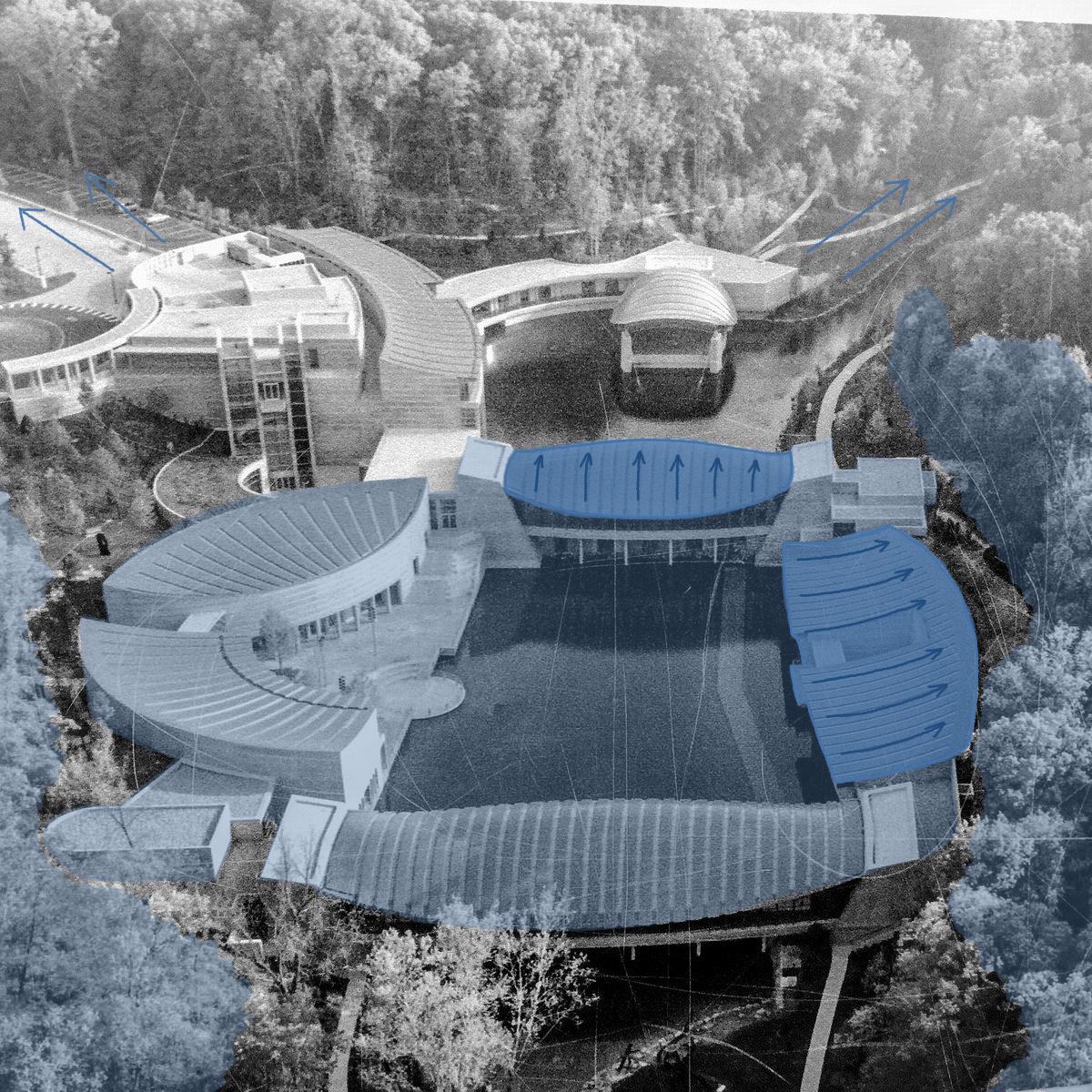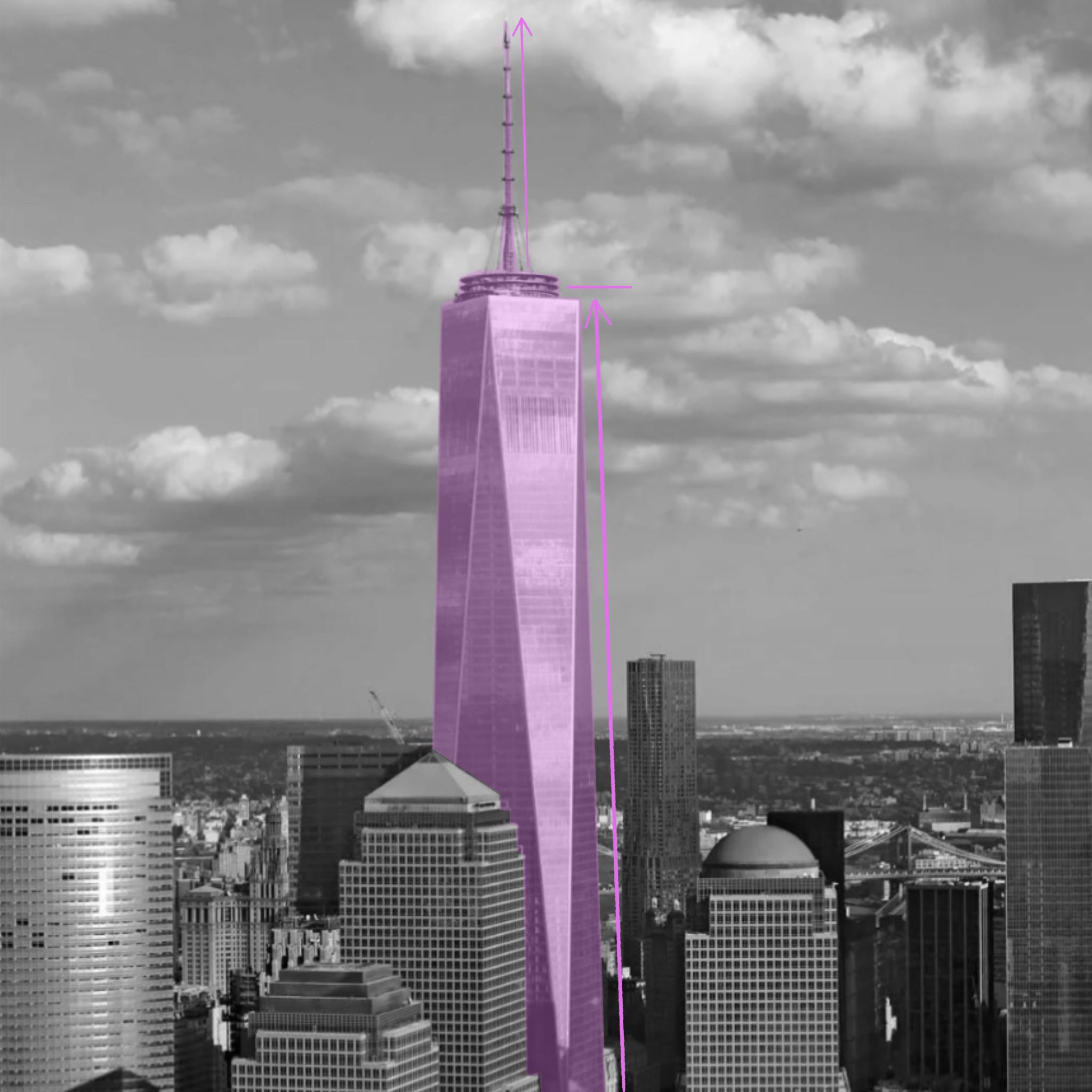Poster 1: Idea
In this precedence analysis, I compared the relationship between the song “is she with you” by hans zimmer and 4 architectural buildings surrounding design elements such as transition, development, repetition, proportion, contrast, and articulation.

I discovered how the harmony of musical notes can mirror architectural features. For instance, the articulation in a song transitions from a constant straight line to gradually or abruptly increasing in intensity, much like how design elements move from gentle curves to linear lines, creating a harmonious blend of natural and built elements. With the smoother, and constant notes symbolize an architectural monument whilst inclined notes evoke uneven landscapes. This fusion of contrasting elements echoes the interplay between architectural forms and the environment.
Moreover, the use of variation in notes reflects the diversity found within architectural designs, much like the varied curvatures in structures. Sequences of certain notes align with the environment, creating pauses that correlate with architectural interruptions and transitions
Repetition, present in both music and architecture, unifies designs. The repetition of geometric forms resonates with varied note repetition
Student Name: Armandeep Brar
Lastly, the musical progression in the song harmonizes with the architectural journey. Notes ascend, transition, and lengthen, paralleling different types of developments. Both fields employ diverse elements to create a captivating symphony of design.
Student ID: 104560252
Architectural Design Studio 1 Studio leader: Nadia AnumPoster 2: Precedent
The opening notes maintain a consistent intensity, while the following ones steadily ascend. In contrast, the notes in the 4th section adopt curves, while the 16th section's initial passage employs linear lines. These musical contrasts mirror the Crystal Bridges museum's design. The curves in the 4th section symbolize the museum's curved rooftops, while the inclined notes (section 14) depict the uneven landscape. This interplay achieves harmony between nature and structure, akin to musical notes' blend.




Additionally, inversely positioned curves in the notes reflect the museum's varied curvatures. From note 16 to 19, the 'flat, curved (guitar discontinuation), flat' sequence parallels the museum's surroundings. Flat notes mirror landscape, curved notes echo the museum, symbolizing integration within nature.

The Quadracci Pavilion's shifting wings parallel the transitions in Hans Zimmer's "Is She with You?" composition. In section 16, an architectural shift aligns with a musical transition between passages, accompanied by a brief musical pause.
This pause reflects the pavilion's design, suggesting interrupted sunlight like its sun-shielding wings. Both composition and building share dynamic transitions. Just as music's pause builds tension, the museum's abstract design intrigues viewers, luring them deeper to uncover its unfolding visual experience. Similarly, the song's abrupt start echoes the pavilion's dark entrance, shifting visitors from external to art-enriched interior.
Repetition is a prominent feature in the song, expressed through diverse note patterns. Similarly, Doha's Museum of Islamic Art uses repetition in cubes, squares, hexagonal prisms, and arches. This repetition unifies the architectural design, as does the music's varied note repetition. Furthermore, the museum's proportion is shaped by the repeated usage of repetition. This mirrors the music's usage of multiple instances of the usage of repretition on unique music passages.
The musical progression in the song aligns with the architectural design of One World Trade Center. Notes in the song ascend, transition, and lengthen. Similarly, the tower's design features a bottom-to-top development with glass and steel, interrupted by ring transitions, and crowned by a singular beam.
 Student Name: Armandeep Brar Student ID: 104560252
Architectural Design Studio 1 Studio leader: Nadia Anum
Student Name: Armandeep Brar Student ID: 104560252
Architectural Design Studio 1 Studio leader: Nadia Anum
Poster 3: Evaluate
- The transition in the song parallels the entrance to the Quadracci Pavilion, symbolizing the shift from the external world into an interior enriched with art.
- Various stages of transition are depicted by segmenting the World Trade Center into multiple sections, aligning with the song's ascending, transitioning, and lengthening notes.


- The variation in outward and inward curved roofs of the Crystal Bridges Museum mirrors the inversely positioned curved notes in the song.
- Different forms of repetition in the song mirror the diverse repetitions found in the architectural structure of Doha's Museum of Islamic Art.
- The appearance of blue notes (note 16 to 19) corresponds to the 'flat, curved notes' (guitar discontinuation), representing the Crystal Bridges museum and the guitar-played notes symbolize nature. This interplay establishes contrast between the natural and constructed environments.
- The Quadracci Pavilion's wings, which develops the museum's appearance, correspond to the changing notes' appearance and the resulting sound they generate.
Poster 4: Design


In my design process, I drew inspiration from the intriguing relationships I discovered between music and architecture during my analysis. Specifically, I focused on the elements of contrast, articulation, transition, development, repetition, and proportion to shape my creative vision.

From the Crystal Bridges Museum, I learned how the interplay of contrasting design elements—like opposing curves and inclined forms—can achieve a harmonious blend between the natural environment and the architectural structure. I've embraced this concept by exploring innovative juxtapositions of materials, shapes, and spaces in my design, aiming to create an engaging and seamless interaction between the built environment and nature.
Drawing from the Museum of Islamic Art in Doha, Qatar, I've incorporated the concept of repetition to unify my design's architectural elements. By skillfully repeating forms and patterns, I aim to create a sense of coherence and harmony throughout the space, just as the music's repetition in "Is She with You?" contributes to its overall unity.
Finally, from the One World Trade Center I borrowed the idea of slopes, direction and movement. I have incorporated these attributes into my designs by creating asymettrical buildings consisting of slopes and angualr edges mimicking the ascending notes in the song.
Poster 5: final
I've taken the insights from my analysis and applied them to shape my final design. Just as the Quadracci Pavilion's shifting wings reflect transitions, I integrated dynamic angular shapes and asymmetry into my design to guide movement and create engaging visual transitions. From the Museum of Islamic Art, I harnessed the power of repetition, using it to unify spaces through consistent angular motifs and design elements. I've also emulated its play with light, using the repetition of openings to create captivating patterns of natural light and shadows. Much like the One World Trade Center, I infused development and transition into my design, capturing the essence of ascending spaces and utilizing materials like glass for my windows to mirror the tower's upward trajectory. By weaving in these elements of contrast, asymmetry, repetition, and dynamic transitions, I've shaped a design that resonates with both architectural and musical harmonies.
 Student Name: Armandeep Brar Student ID: 104560252 Architectural Design Studio
Student Name: Armandeep Brar Student ID: 104560252 Architectural Design Studio
